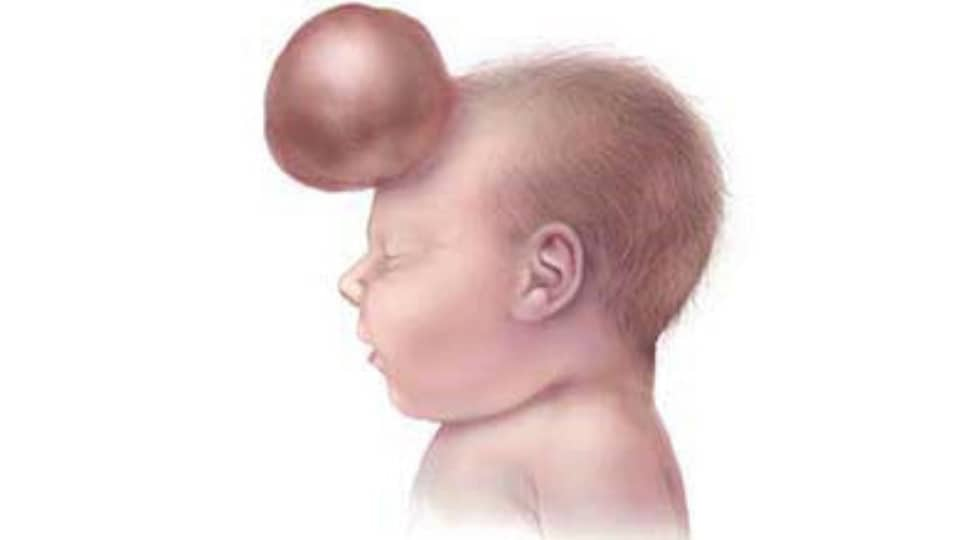Key points
- Encephalocele (en-sef-a-lo-seal) is a sac-like protrusion of the brain and membranes that cover it through an opening in the skull.
- Surgery is required to place the brain and membranes back in the skull.
- Researchers estimate about 1 in every 10,400 babies is born with encephalocele in the United States.
What it is
Encephalocele is a rare type of neural tube defect (NTD) that affects the brain. The neural tube forms the early brain and spine. When the neural tube does not close completely during early pregnancy, encephalocele can happen.
With encephalocele, a baby is born with a sac-like protrusion of brain tissue coming out of an opening in the skull. The opening can be anywhere along the center of the skull, from the nose to the back of the neck. The most common locations are the back of the head, the top of the head, or between the forehead and the nose.
An encephalocele at the back of the skull is more likely to cause nervous system problems. Encephalocele can also lead to other issues, such as:
- Buildup of too much fluid in the brain
- Complete loss of strength in the arms and legs
- Developmental delay or intellectual disability
- Vision problems
- Seizures

Risk factors
Not all causes of encephalocele are known, but certain factors can affect the risk of a baby having an encephalocele. This can include a change in the baby’s genes or a combination of genes and other factors.
Researchers have identified factors in pregnant people that might increase the risk for these conditions:
- Low folate (vitamin B9) levels during early pregnancy1
- Pre-existing health conditions, such as diabetes, that are not well controlled
- Certain medications, such as antiseizure medications
- Overheating (like getting in a hot tub) and fever
Importance of Folic Acid
Diagnosis
Usually, encephaloceles are found right after birth. Sometimes a small encephalocele in the nose and forehead region can go undetected.
Treatment
Encephalocele is treated with surgery to place the protruding part of the brain back into the skull. The surgeon will also close the opening in the skull. Multiple surgeries may be needed. The treatment will depend on the location of the encephalocele and the parts of the head and face that are affected.
Neurologic problems caused by the encephalocele will still be present. Long-term treatment depends on the child’s condition and specific needs.
Resources
The views of these organizations are their own and do not reflect the official position of CDC.
National Organization for Rare Disorders: NORD advances practical, meaningful, and enduring change so people with rare diseases can live their fullest and best lives.
- Crider KS, Qi YP, Yeung LF, Mai CT, Head Zauche L, Wang A, Daniels K, Williams JL. Folic Acid and the Prevention of Birth Defects: 30 Years of Opportunity and Controversies. Annu Rev Nutr. 2022 Aug 22;42:423-452. doi: 10.1146/annurev-nutr-043020-091647.
- Stallings, E. B., Isenburg, J. L., Rutkowski, R. E., Kirby, R. S., Nembhard, W.N., Sandidge, T., Villavicencio, S., Nguyen, H. H., McMahon, D. M., Nestoridi, E., Pabst, L. J., for the National Birth Defects Prevention Network. National population-based estimates for major birth defects, 2016–2020. Birth Defects Research. 2024 Jan;116(1), e2301.
